15 Best Hip Opening Stretches for Runners with Tight Hips
This post may contain affiliate links. All opinions shared are my own. As an Amazon Associate I earn from qualifying purchases. Click to view our full disclosure.
All content is created by humans – not AI.
Interested in improving your movement during exercise and in daily life? Increase the range of motion in your hips with these 15 hip stretches for running! The stretches can help improve daily functional movements, reduce low back pain, and improve knee function as well.
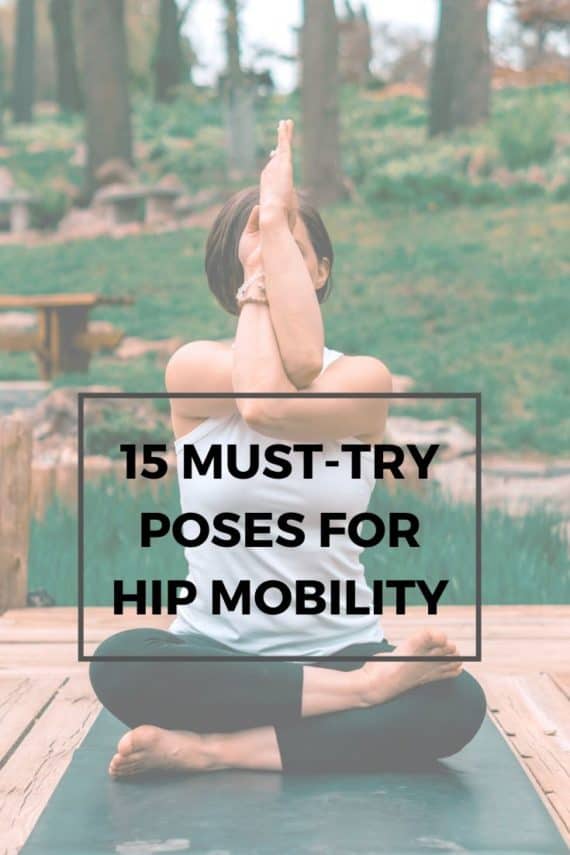
*This post was updated June 30, 2021 by Kalee Dillard.
Want to move better and feel great? Of course we do! But sometimes moving better and feeling better can be a challenge, especially if we have daily movement patterns that create tightness in our bodies, especially our hips. A sedentary lifestyle can cause hip pain as well because of the lack of movement patterns in our routine – like sitting. Lots of runners deal with hip tightness due to the demand they put on their body as well.
The good news is that by addressing range of motion in your hips, you can help make exercise a little easier and more enjoyable, reduce your risk of injury, and improve your joint functioning throughout your body, including your knees.
What are hip openers?
When we talk about “hip openers”, we’re referring to hip mobility exercises, stretches, myofascial release techniques, and modalities that help to increase range of motion in your hips. In this post, we’ll talk specifically about stretches that are great for opening hips.
Your hips have multiple planes of motion since they are comprised of a ball and socket joint, so moving your hips in multiple planes is natural and beneficial.
I consider hip opening stretches to be stretches and yoga poses that help to release (or “open”) tight muscles around the entire hip joint, both on the inside of your hips (adductors), front of the hips (hip flexors), and the outside of the hip joints (gluteus muscles).
Why does hip mobility matter?
You might be wondering why it’s even important to add hip openers and hip mobility exercises to your workout routine. Before we get into the best hip stretches for running, we’ll take a moment to explain why hip openers should be a regular part of your fitness routine.
One of the major reasons that hip mobility is important is that it helps to maintain proper movement in the kinetic chain and improves your movements in both fitness endeavors and your daily routine.
The idea of a kinetic chain is that each joint and muscle has an impact on the surrounding joints and muscles. For example, poor range of motion in your hips can result in muscular imbalances, knee pain and lower back pain since these joints are in close proximity to your hip joints.
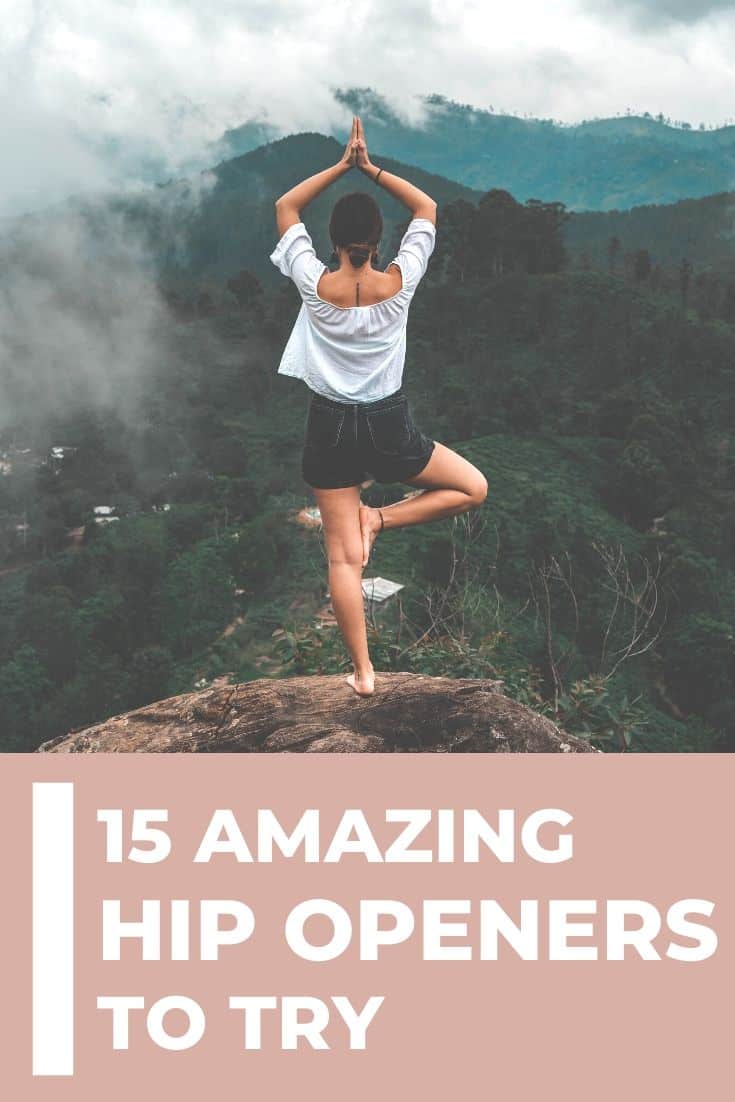
Maintaining proper functioning and range of motion in your hip joints can result in proper functioning of your knee joints and low back.
When our hips, knees, and lower back are functioning properly, it is more likely that the rest of our body (mid and upper body, feet, etc.) will also move in the proper way as well.
Hip mobility exercises include not only hip openers but also glute/piriformis stretches as well to improve internal rotation of your hip and legs. Both are important for all-around hip mobility!
Hip mobility exercises and hip openers are also great for:
- Improving pelvic floor function (releasing tight adductor muscles can help improve chronic muscle tightness in the pelvic floor)
- Improvement in low back pain (releasing and stretching tight hip flexors helps release pressure from lower back muscles)
- Improves daily life functional movements that include squatting, walking stairs, picking up things (deadlift movements), etc.
15 hip Stretches for Running, hip mobility and hip opening
So now that we know hip openers and hip mobility exercises are great for our entire body (not just our hips), here is a list of some of the best hip stretches for running and poses for improved hip mobility.
These stretches are listed in order from easiest to more difficult. If you’re a beginner at hip opening exercises, start with the easier stretches and poses, then move to the more difficult ones after you’ve gained more flexibility. It can also be helpful to do a short walk as a low-intensity warm up before stretching.
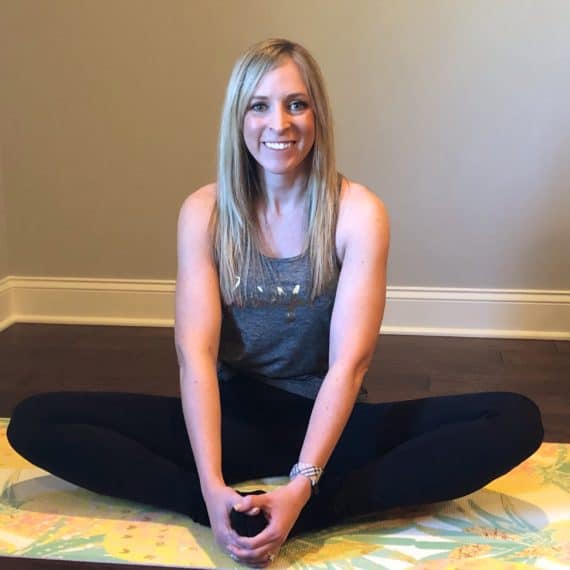
Butterfly stretch
Both seated butterfly and reclining butterfly are great and can be used interchangeably based on your needs. If you are tight or have hip problems, put supports, bolsters, or pillows under your knees during butterfly to add extra support during this stretch.
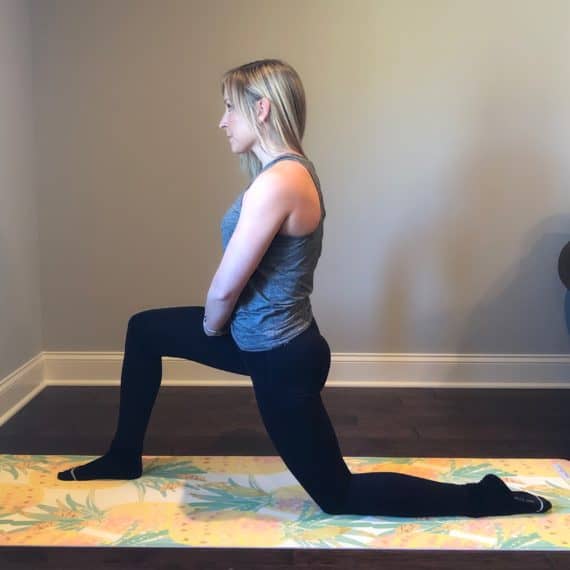
Kneeling hip flexor stretches
If you stay in a seated position most of the day, you may be dealing with tight hip flexors. A kneeling hip flexor stretch, or a low lunge, is an excellent stretch to do regularly throughout the day to improve your hip mobility. You’ll want one leg forward and one under your hips, and your hands can rest lightly on the top of your thigh.
Tight hip flexors can create imbalances in your hip, knee, and low back function, so making sure to stretch your hip flexors regularly is important.
If you have knee problems, put cushions or a knee pad under your knees during this stretch.
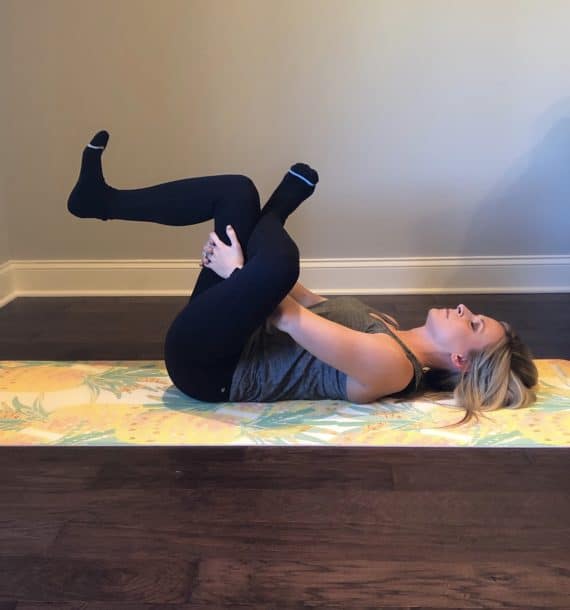
Reclining/supine pigeon
Another great stretch is the reclining pigeon stretch is a fairly easy stretch that helps to open your hips and stretch your glute muscles and piriformis muscle at the same time. For a deeper stretch, you can flex both soles of your feet and gently push the bent knee
This stretch is also sometimes called “figure four” because of the position of your legs.
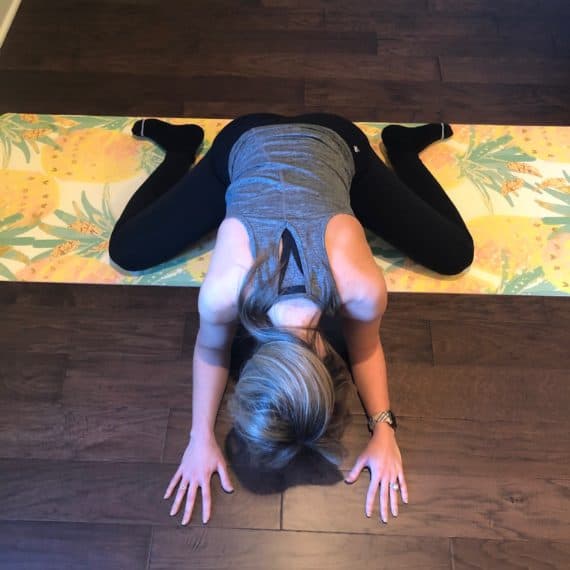
Frog pose/stretch
Frog pose is my favorite yoga pose for your adductors/inner thighs as long as it doesn’t bother your knees. If you have problem knees, modify this one by placing cushions under your knees and don’t sit back as far.
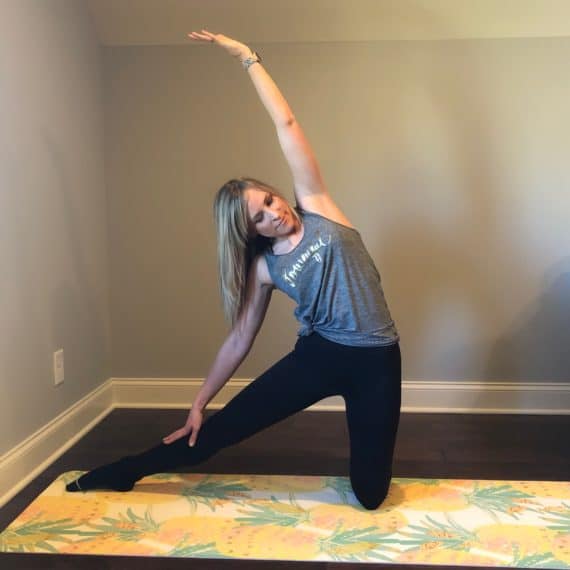
Gate pose
Gate pose stretches your inner thighs and outer hips (your adductor muscles). This helps with external rotation of your hips.
You can place a folded yoga mat or cushion under your supporting knee to make this easier on your knees.
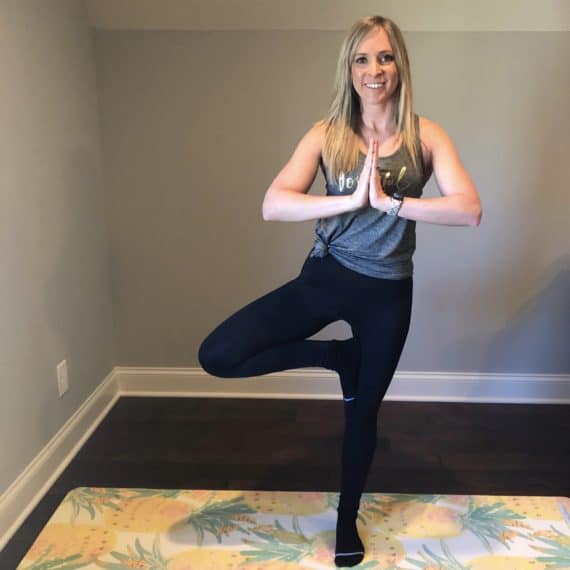
Tree pose
Tree pose opens the hip gently, stretching the pectineus muscle and inner and outer thigh muscles as well. This standing position pose is also a great way to do a little balance and strength work, too. If you have balance issues, use a wall or chair for support.
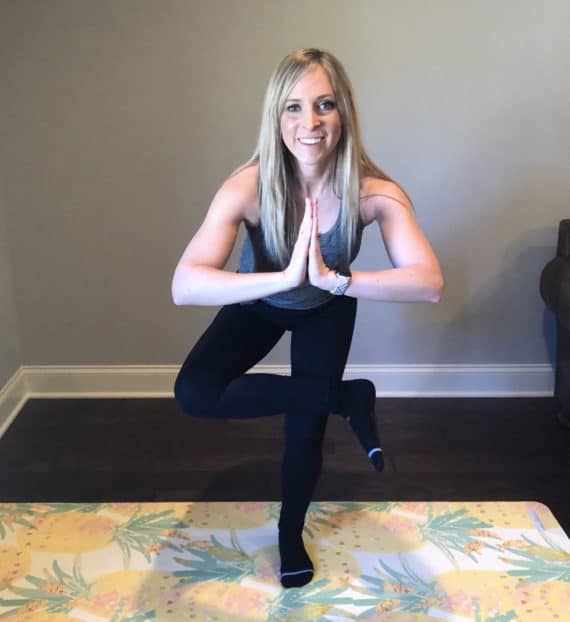
Standing pigeon
Standing pigeon is a great way to open your hip and stretch your gluteus muscles without doing a full pigeon pose on the ground, so this is a bit easier on your joints if you have joint problems, and it helps to build balance as well.
If you have balance issues at first, hold on to a wall or chair to add stability in this pose.
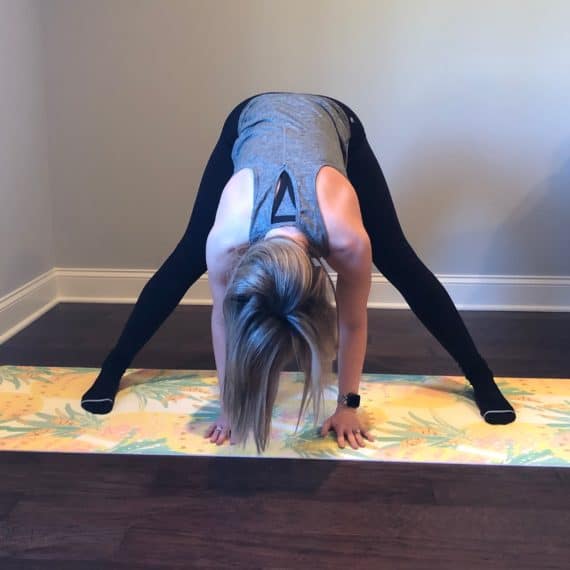
Wide-legged forward bend
Not only does the wide-legged forward bend stretch the adductors / inner thigh muscles, but it also stretches your hamstrings, so this is a great double-duty pose.
If the stretch on your hamstrings is too intense, bend your knees slightly. Do this move with caution if you have high blood pressure or vertigo, and avoid this pose completely if you have glaucoma. This is a type of inversion and can create more pressure in your head.
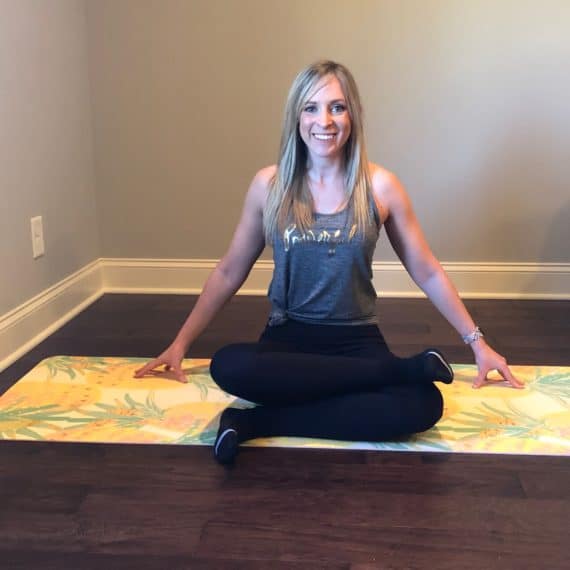
Fire log
If you want to work on external rotation of your hip joint while also stretching the glute and outer hip muscles, fire log is a great pose (one of my personal favorites) for hip opening and mobility.
Listen to your knees in this pose: if it is uncomfortable for your knees, carefully release from the stretch and try again later as you become more flexible.
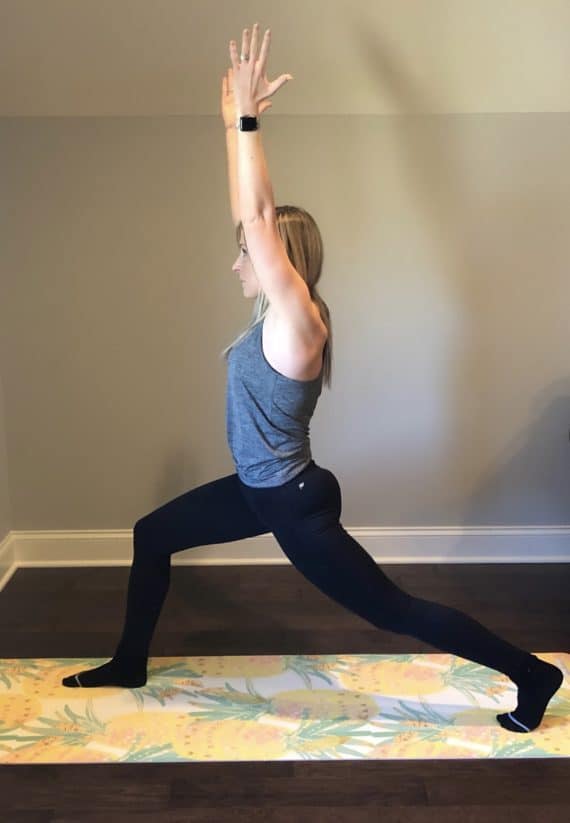
Crescent lunge/high lunge crescent variation
The crescent lunge is an awesome hip opener since it helps to release and stretch your hip flexors as it strengthens your leg muscles and opens the front of your body as well (you can add a nice chest opener to this as well).
It’s a great progression of the kneeling hip flexor stretch.
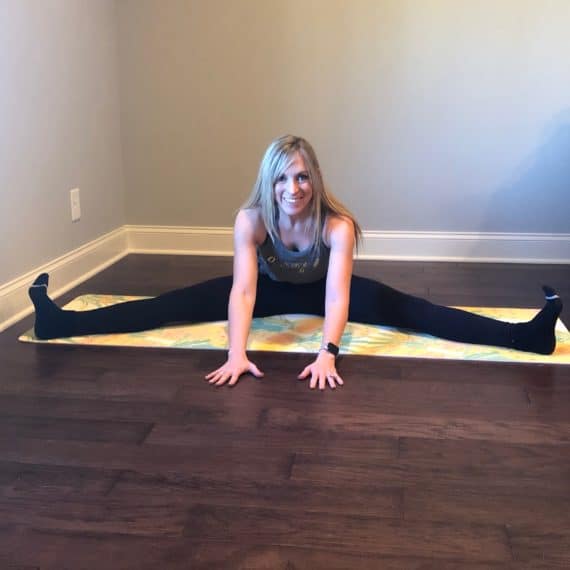
Seated wide-angle forward bend
The seated wide-angle forward bend is a seated version of the wide-legged forward bend. While it is seated rather than standing, it still isn’t easier than the standing pose!
This stretch is oftentimes a little bit harder to do since gravity is not assisting you with your stretch in this one. Start with the standing pose first and progress to this hip opener. This stretch opens up your adductors/inner thigh muscles and pectineus muscles.
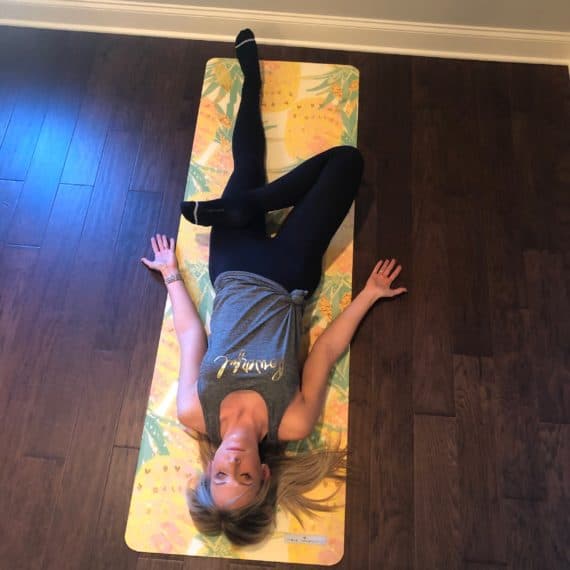
Supine half lotus
This is one of my favorite stretches! It helps to open your hip with external hip rotation, but it also helps stretch the muscles surrounding your knee as well.
You can modify this pose by not bringing your foot up as high on your hip in this stretch.
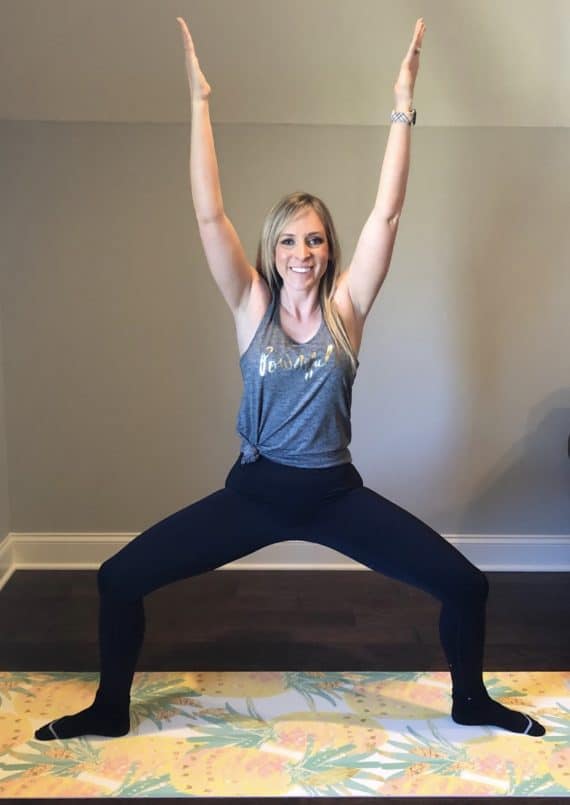
Goddess pose
Goddess pose is a deeper squat, but not as deep as garland pose, so it’s easier to do. This opens both hips at the same time by stretching the adductors/inner thighs, but it also strengthens the muscles in your glutes and quads at the same time. Stretch and strength in one pose!
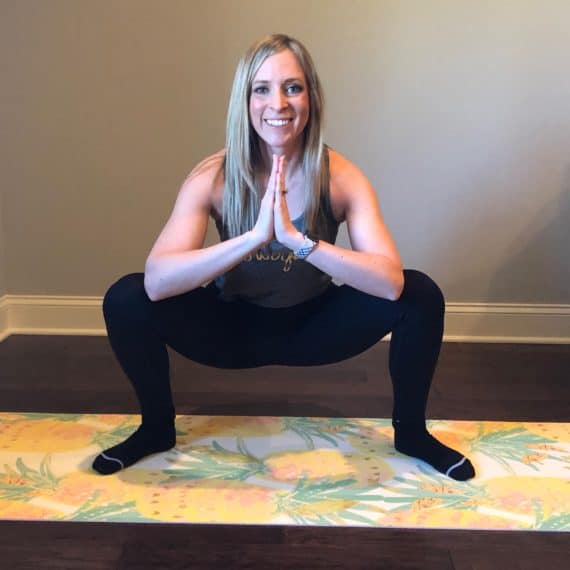
Garland pose
Garland pose is a deep squat pose that works great for opening the hips and adding mobility to the hips. But it is a more intense pose, so enter this pose with care and use pillows or bolsters under your hips for support if you are new to this stretch.
You can also add a rolled-up mat under your heels for support if your heels don’t touch the floor.
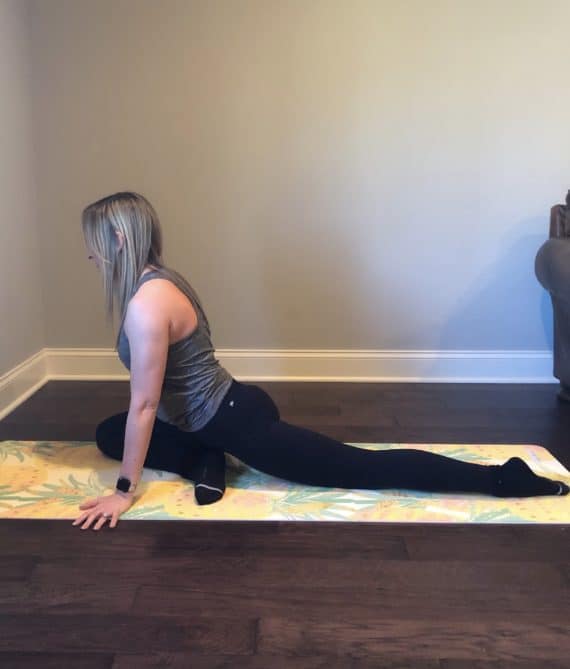
Pigeon
Pigeon pose is another one of my favorite hip stretches, but it can be a big stretch if you’re new to it. Move into this pose with care and add bolsters or pillows under your hips for support if you are new to this stretch.
Listen to your hips and knees, and gently come out of this stretch if it doesn’t feel right for your joints.
Are there times you shouldn’t do hip stretches for running
Yes! As with many exercises, make sure to contact your doctor or a physical therapist about beginning new exercise programs. You should also proceed with caution in these specific hip opener exercises if you have labral tears, FAI hip impingement, arthritis in your hips, and hip dysplasia.
If you are pregnant, it’s also a great idea to chat with your doctor about trying hip opening exercises and stretches if you are new to them.
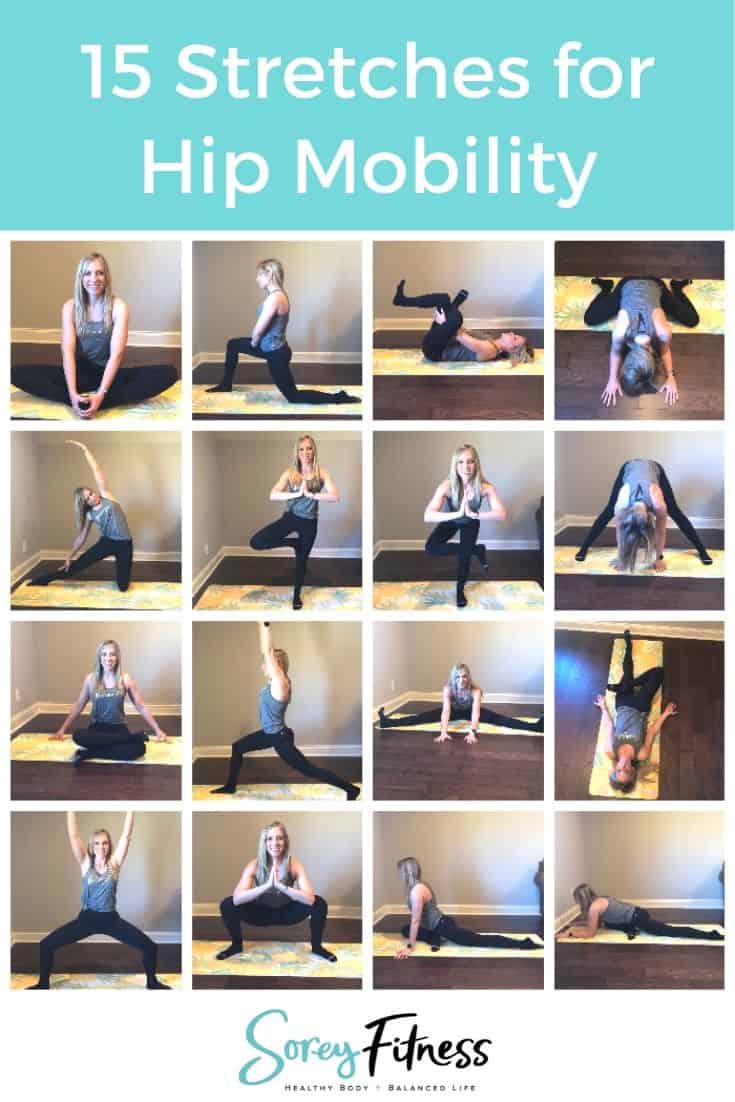
Hip openers and hip mobility exercises are amazing for improving your hip, knee, and low back function, but if you have any of these conditions are released by your doctor to do yoga or hip opening exercises and stretches, make sure to ease into them carefully. These poses are just suggestions and shouldn’t be taken as medical advice.
Always listen to your body. If a pose doesn’t feel right, modify it or try something else. You can always try again later, and if a pose just doesn’t work for your body, there are many other beneficial poses to do instead.
Increase hip mobility at home with Beachbody Yoga Studio on Demand
Worried about trying a yoga class on your own or doing these poses without instruction? You can do these great hip opening stretches in your own home and at your own pace with the Beachbody Yoga Studio on Demand
The yoga classes included in the Beachbody Yoga Studio on Demand include many of these great hip mobility exercises and more, so you can improve your strength and hip range of motion at the same time.
If you’re looking for a good place to start with yoga and hip openers, check out the Beachbody 3-Week Yoga Retreat Challenge. The Beachbody Yoga retreat offers expert yoga instruction for beginners in a 3-week format. Week 1 establishes a foundation with yoga fundamentals, week 2 is expansion, and week 3 is progression to challenge yourself.
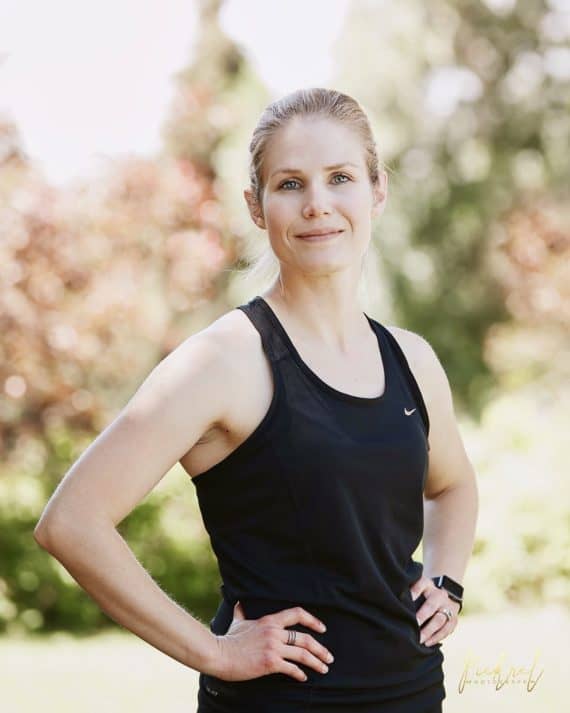
Sarah Jane Parker is a food and healthy living blogger, an ACSM Certified Personal Trainer, ACE Certified Health Coach, Revolution Running certified running coach, YogaFit Level 1 certified yoga instructor, and an ACE Certified Fitness Nutrition Specialist.

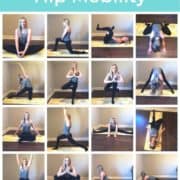




This is EXACTLY what I need today *and honestly, everday, lol
Oh I’m so glad! I hope the stretches really help you!!